By Scott Christ
This Saturday on ESPN+ from the MGM Grand in Las Vegas, Tyson Fury returns to the ring to face German heavyweight Tom Schwarz.
What’s at stake?
There are no belts on the line, but Fury (27-0-1, 19 KO) claims to be the lineal champion of the division as a result of beating Wladimir Klitschko back in 2015.
You’re going to hear ESPN people repeat this all week, and tell you that it means Fury is “the man who beat the man who beat the man who beat the man,” but Fury’s claim to the lineal championship ended in 2016 when he retired. If you want to consider Fury the lineal champion, that’s up to you and I’m not going to scream at you about it, but the claim is suspect at best, and more a marketing tool than anything. But you could also say that about probably 75% of the alphabet belts across boxing, so oh well.
More than the title, Fury’s reputation and drawing/negotiating powers are on the line. This is the first fight of a lucrative deal with Top Rank/ESPN, and if he loses to Tom Schwarz (24-0, 16 KO), it’s a disaster, and probably kills — or at least severely damages — those big plans of a 2020 rematch with Deontay Wilder.
How did Tyson Fury get here?
Life started for Tyson Fury when he was born three months premature and weighed one pound. His father John — who had some pro fights from 1987-1995, and many more that weren’t licensed — named the boy Tyson after Mike Tyson, then ruling the world of boxing.
The tiny baby grew up to be a pretty big fella, and had a good amateur career, capped when he won gold at the English National Championships in 2008. With no spot on the British Olympic team open for him, Fury turned pro in Dec. 2008.
Tyson was marketed well just about from the jump, but there were also serious doubters from just about the jump. At 6’9” with an 85-inch reach, Fury had obvious upside, and he was moved pretty aggressively. But before we get to his successes, we do have to mention what happened in his fourth fight.
Facing journeyman Lee Swaby, Fury accidentally punched himself in the face. He threw an uppercut at Swaby, and it came up short, and he clubbed himself right in the mush. Fury has lived it down, obviously, going on to reach the top of the sport, but it was a goofy highlight in his career that can’t go unmentioned.
He also stopped Swaby in four, and went onto face John McDermott, a solid domestic fighter, six months later. He won on points over McDermott and proved he was more than a big tall weirdo who punched himself in the face. A rematch with McDermott nine months later saw Fury stop his rival in nine.
In 2011, Fury faced Dereck Chisora for the British and Commonwealth titles, boxing effectively and scoring a decision victory over the then-unbeaten Chisora. Fury picked up wins over Neven Pajkic, Martin Rogan, Vinny Maddalone, and Kevin Johnson in 2011-12, then made a trip to the United States to face former cruiserweight titleholder Steve Cunningham in April 2013.
Cunningham was giving up height and reach and over 40 pounds of weight to Fury, but the American blasted Fury with an overhand right in the second round that put the big man on the canvas. Fury rebounded and knocked Cunningham out in the seventh round. Of the knockdown, Fury said, “I got caught with a big swinging right hand. When you don’t see them coming, you go down. But you get back up.”
Fury beat Joey Abell and rematched Chisora in 2014, stopping Chisora after 10 rounds. Christian Hammer was stopped after eight a few months later, and then in Nov. 2015, Fury got the call he wanted, a shot against Wladimir Klitschko in Germany.
Klitschko had reigned over the heavyweight division for over nine years by that point, and he was the clear favorite going into the fight. He opened around -600, but by the time of the fight that was down to about -400 — still, a clear favorite.
Fury, though, upset the odds in Düsseldorf, winning a decision over Klitschko on scores of 115-112, 115-112, and 116-111. Fury’s style gave the Ukrainian veteran fits. Fury didn’t do much on offense himself, but his movement shut Klitschko’s own offense down to the point that he was near completely ineffective, struggling to pull the trigger and looking old. Fury’s jab kept Klitschko at a distance. It was, quite frankly, an extremely dull fight, but the exact right one for Fury to take the title from Klitschko and change the heavyweight division for good.
It should have been the start of a new ruler at heavyweight, a new era for the division. And it was, really, but it wound up having little to do with Tyson Fury going forward.
Fury was quickly stripped of one of the belts — the IBF — that he’d won from Klitschko, as he was contractually obligated to rematch Wladimir, and the IBF decided after 10 days that Vyacheslav Glazkov could wait no longer for his mandatory title shot.
In April 2016, a Fury-Klitschko rematch was finally announced, with Fury getting home field in Manchester, England. Fury was overweight at the press conference, which he played up by taking off his shirt and displaying his condition.
The fight was scheduled to take place July 9, but on June 24 it was postponed with Fury reportedly suffering an ankle injury in training. And then, that same day, Tyson and cousin Hughie Fury were charged by UK Anti-Doping (UKAD) with having used prohibited substances in tests from Feb. 2015, nine months before Tyson’s win over Klitschko.
The Klitschko rematch was again postponed in September, with Fury declared “medically unfit.” Fury tested positive for cocaine and said he’d had problems with depression, which he expanded on in an Oct. 2016 interview with Rolling Stone.
Fury vacated his WBA and WBO titles that same October. A day later, his boxing license was suspended by the British Boxing Board of Control. Rumors of a comeback circulated through 2017, but nothing came of them. UKAD decided in Dec. 2017 that Fury had already effectively served a two-year ban, and in Jan. 2018, Fury got his license back from the BBBofC.
Fury signed with Frank Warren and made his return on June 9, 2018. Though Fury was somewhere around 30 pounds over his peak fighting weight, he’d dropped a ton of the weight he added during his lengthy absence, and took care of the overmatched Sefer Seferi in four rounds. He scheduled a quick return, dropping another 18 pounds for an August win over Francesco Pianeta, which went the 10-round distance.
Then Fury, who had previously said he wanted four tune-up bouts to work himself back into shape, surprised everyone by signing to face WBC titleholder Deontay Wilder on Dec. 1 in Los Angeles.
The fight became one of the most talked-about of 2018. Wilder’s massive and highly-touted power was on display twice, as he dropped Fury in the ninth round, and then appeared for all the world to have knocked him out with an enormous shot in the 12th.
But Fury got up both times, the second time in unbelievable fashion, the sort of shit that only happens in movies. He finished the fight, and many believed that despite the knockdowns, he’d done enough to win. The official decision, however, was a draw.
The one thing that was clear, though, was that Tyson Fury was back, and he was going to be a problem for anyone in the heavyweight division. A much-desired rematch with Wilder was ordered by the WBC in early 2019, but Fury swerved everyone, signing a deal with Top Rank and ESPN, which has led us to his return on Saturday.
How did Tom Schwarz get here?
Well, someone called him and offered him a fight with Tyson Fury, and Schwarz accepted it.
A 25-year-old German, currently ranked No. 56 in the world by BoxRec, Schwarz was on nobody’s radar before the announcement was made that he’d be fighting Fury. And if you’ve gone around looking for footage of him after that announcement was made, you can see why.
Fury, when he feels like selling the fight, talks Schwarz up as big, tall, sturdily built, ranked highly by whatever sanctioning body it is that has him ranked absurdly highly, handsome, etc.
But if you want to see what Schwarz has in the ring, there’s footage out there. Most damningly, his April 2018 DQ win over Senad Gashi shows a fighter who should be absolutely no problem for Fury, an ugly mess of a fight. There’s nothing you can find on Tom Schwarz that suggests he’s a challenge for Tyson Fury.
How do the fighters match up?
Fury is 6’9” with an 85-inch reach, Schwarz stands 6’5½”, no reach I can find listed anywhere, but it’s not 85”. Schwarz usually weighs around 235-240 for fights, Fury has most recently been just under 260, but could well be lighter for this one and potentially closer to the 247 he weighed against Klitschko in 2015. He’s looked in great shape doing all the press for this four.
Schwarz has never faced anyone particularly good, while Fury’s had a very odd career path. Other than the win over Klitschko and the draw with Wilder, who has he really faced? Chisora a couple times, Christian Hammer, Steve Cunningham. But when put to the test against top heavyweights, Fury has proven he’s stylistically problematic for anyone. He’s slicker than just about any heavyweight you’re going to find anymore, and he manages that on a massive frame that gives him natural advantages over anyone he faces, even in the era of the big, tall super heavyweights.
Tyson Fury is a lot of things. He’s outspoken, controversial, polarizing, charismatic, and downright odd. He, at times, can be funny and witty and even quite empathetic toward others. At other times — often within the same interview — he can be nasty and mean-spirited. He’s become an advocate for mental health issues. He marches to the beat of his own drum perhaps more than any fighter in the sport today. And in the ring, when he’s at his best, there are few who size up as a real challenge for him in the division. If Fury is at his best, Tom Schwarz does not figure to be on that very short list.
Who’s the favorite?
Fury, clearly, by a lot. As of this writing, Fury is listed between -2075 and -5000 on various sportsbooks. There is some belief with Andy Ruiz Jr having upset Anthony Joshua on June 1 that this could be another heavyweight stunner, but Fury isn’t Joshua, and Schwarz isn’t Ruiz, either. That said, the lines may be a bit closer than you’d expect — still wide, but maybe not as wide as they would have been because of that fight. Schwarz is listed between +900 and +1575.
- The ESPN+ co-feature will see Jesse Hart (25-2, 21 KO) move up from super middleweight to light heavyweight to face Sullivan Barrera (22-2, 14 KO), a guy who’s been a contender for years. It’s an interesting matchup and very relevant, as Top Rank have three of the division’s four titleholders (Sergey Kovalev, Artur Beterbiev, and Oleksandr Gvozdyk), plus Gilberto “Zurdo” Ramirez. Hart-Barrera is a much more competitive fight on paper than Fury-Schwarz, and a solid co-feature.
- The prelims will air on ESPN2, and feature the return of Mikaela Mayer (10-0, 4 KO), who faces Lizbeth Crespo (13-4, 3 KO), plus heavyweight prospects Guido Vianello (3-0, 3 KO) and Sonny Conto (2-0, 2 KO) in separate bouts, and Andy Vences (22-0-1, 12 KO) vs Albert Bell (14-0, 5 KO) in a 10-round super featherweight fight.
Article courtesy of Scott Christ & SB-Nation

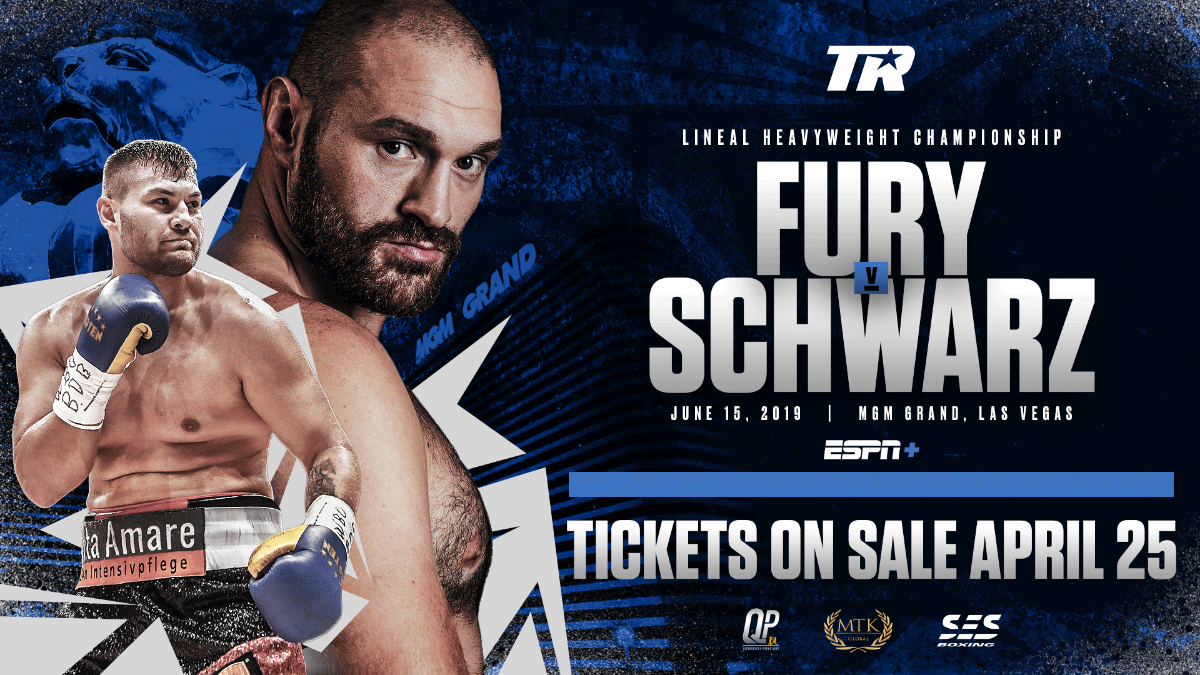
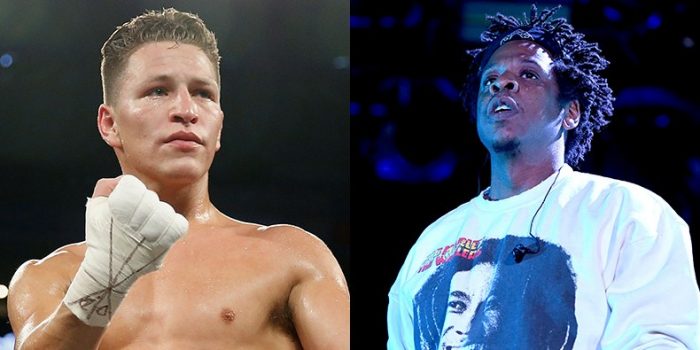
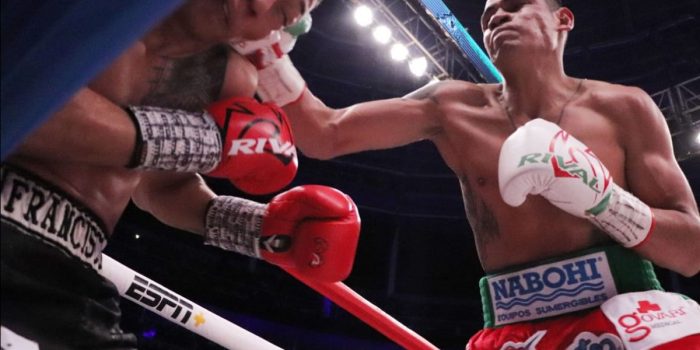
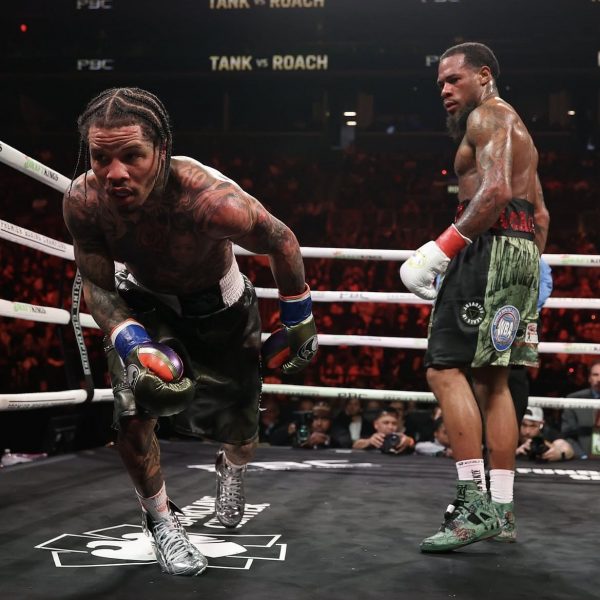
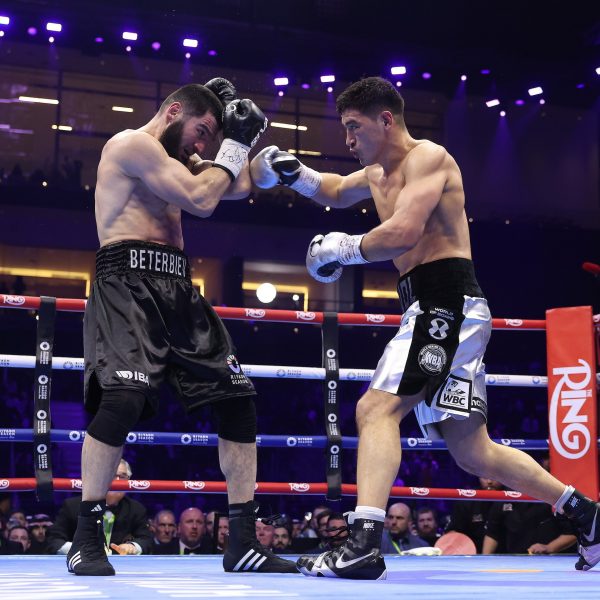
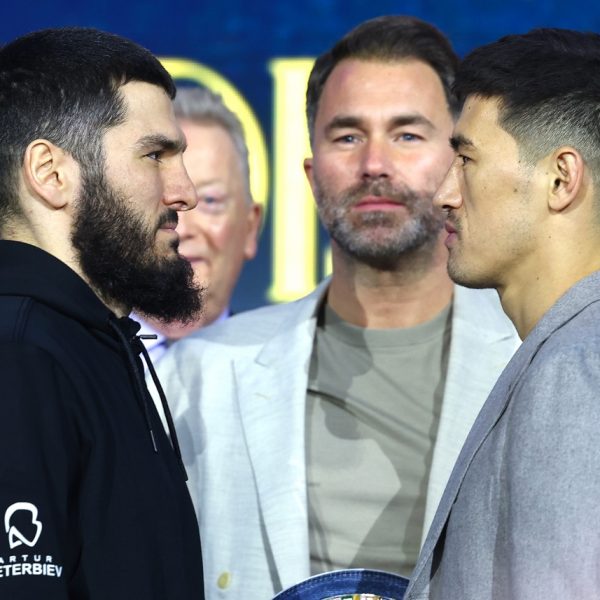
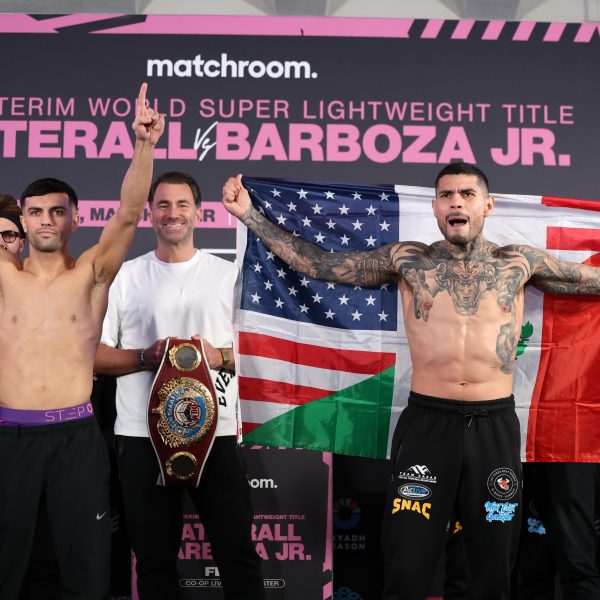
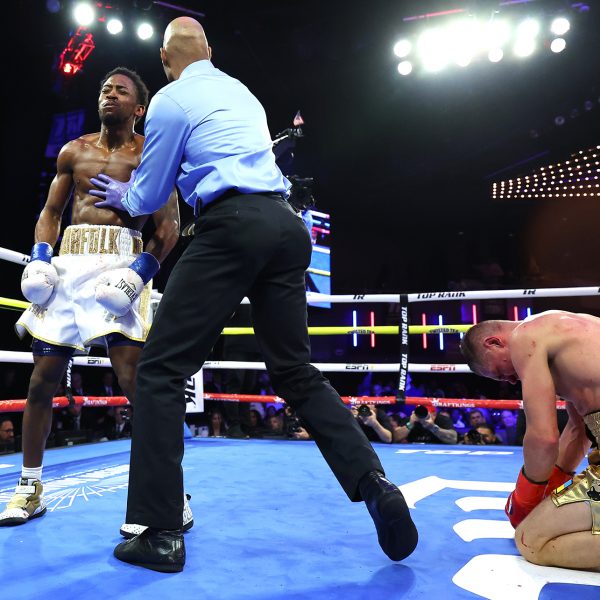
Recent Comments